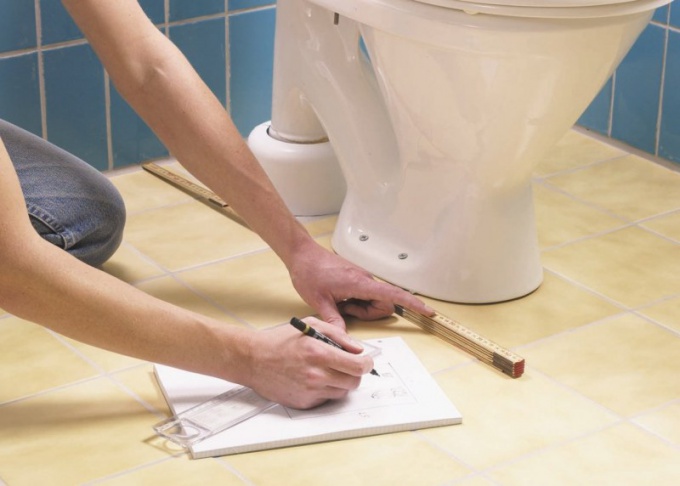Preparing to install
The process of installation of the toilet starts with the selection of the correct model. Before you make a purchase, take into account the exact parameters of your bathroom. Need to know its dimensions, especially the pipe and type of connection of the toilet to the sewer.
Usually, model homes are the toilets-compacts. In stores you can find toilets, bathrooms designed for large area. If you decide to purchase these, be sure to perform measurements and make sure that it can be installed in place of the old.
Select the type of connection
It is very important not to be mistaken with the type of connection. The outlet pipe of the toilet may be performed at different angles. In some older homes, use a vertical drain coming from the floor.
Much more can be found editions of the other two types — angled and horizontal, facing parallel to the floor. If the release type is selected incorrectly, the installation of toilets can be significantly more complicated.
Pay attention to how the water supply connects to the cistern. The water hose can come either from the bottom or the side. If you decide to choose a tank with a side connection, check that there will be enough free space to connect the hose.
If the layout of the bathroom does not allow to sum up the hose on the side, choose a toilet with a lower water hose. When choosing the type of liner keep in mind that tanks with side water flow is stronger than the noise when filling.
The connection of the toilet
Before starting the installation of the toilet, examine it carefully. Make sure it is not damaged during transportation, has no cracks and chips.
In accordance with the enclosed instructions, install the tank on the bowl. Be sure to put the gasket between the bowl and the tank, then tighten mounting screws. The drain mechanism is usually disassembled and requires self-Assembly. Assemble and install into the tank.
Set the bowl on a flat, sturdy surface. The best option is a concrete floor, covered with ceramic tiles.
In older homes the toilet is usually mounted on a wooden stand. If you plan to use it to install a new toilet, check the condition of the wood. In damp wood can rot and require replacement.
Make sure that the issue of the toilet and the tap of the sewer pipes are at the same height. A slight difference in height can be compensated by means of a flexible corrugated cuffs. If the toilet is much lower pipe, you may need to rework the sewer riser or the construction of the runway.
Before drilling the holes necessary to produce the markup. To do this, the toilet is installed the way it should be when operating. Using a marker to circle its outline and mark the future holes.
Attached toilets with special plumbing screws with hex head. If the floor is concrete, you'll need with the punch to drill holes in the floor and score the plastic pins, which will be screwed in the screws. In the case of the wooden stand the dowels are not required — the screws screwed directly into the wood.
Connect the toilet to the drain pipe with a corrugated plastic or rubber sleeve. Joints can be sealed with sanitary silicone sealant.
Installing the toilet, fasten it to the floor with screws. Tighten them very carefully. If you hold out — the toilet will stand unsteadily. If you drag — faience may crack. Don't forget to use the rubber pads under the heads of the screws — typically they go with it.
The final stage of installation — water connection and configuration of the drain valve of the tank. For water it is most convenient to use a flexible connector. Hose length should be selected with a stock, it should not be stretched.
Adjust the water flow and the float. Make sure that when filling the tank the water shut off. Check for leaks. If everything is in order — the toilet is ready for use.
